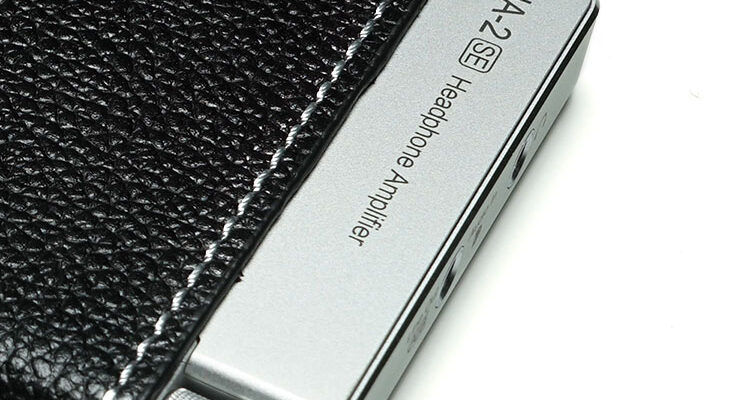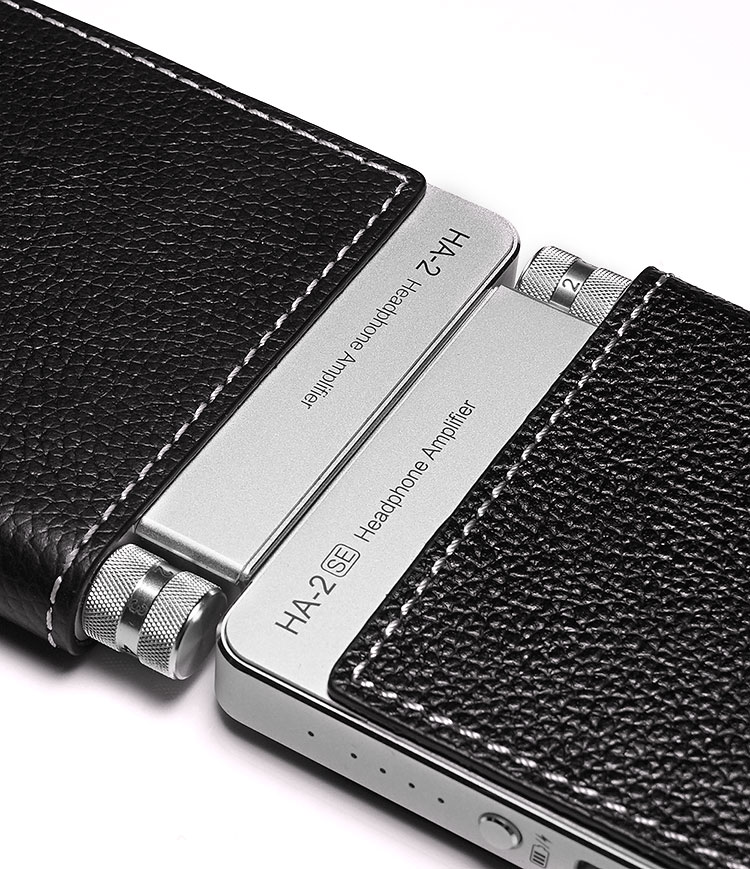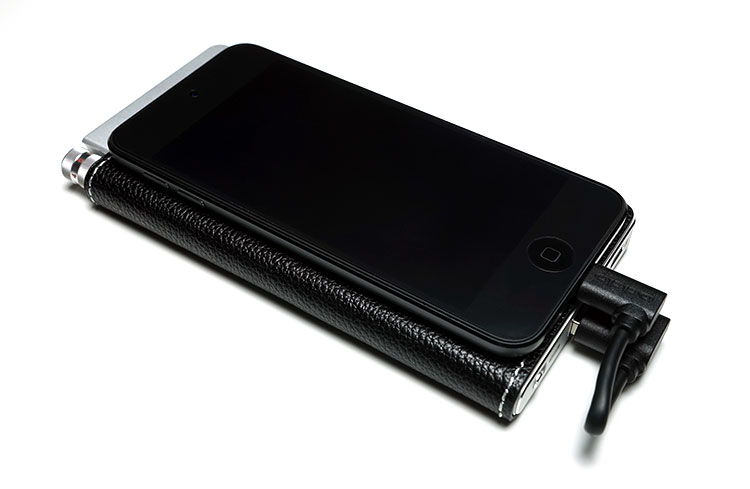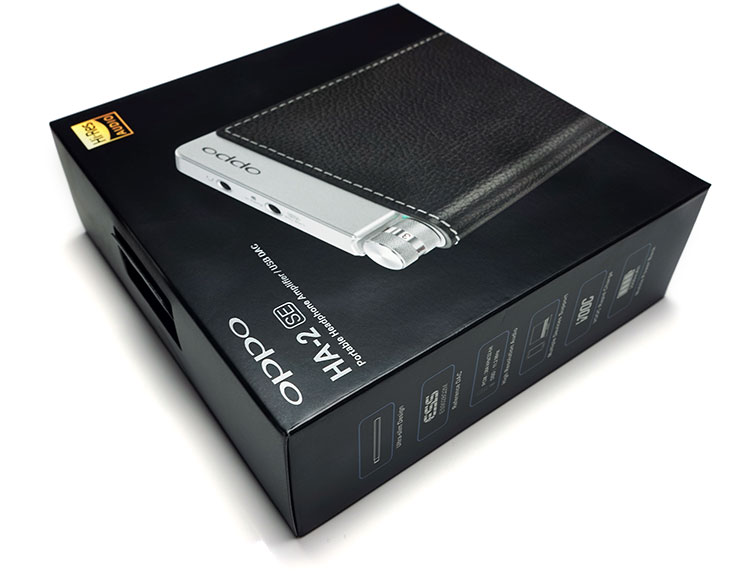Matchability
Efficiency
IEMs
Side by side the HA-2SE now has a much lower noise level with sensitive IEMs with next to no hiss on sensitive IEMs. Tweaking the gain stage results in a much greater control for the likes of the Campfire Andromeda and Jupiter and a cleaner and very pleasing black background. Just a side note but the Andromeda and SXE846 is not totally noise free but it’s very close indeed and unlike the HA-2 there is no audible signal when the volume is set to zero and playback is ongoing.
That being said you do need to push the volume up just a touch more in low gain compared to the older HA-2, a price I guess of lowering the gain stage. During testing, relative volume increase on the HA-2SE was around 1-2 notches on the volume pot (give the notches are 1-5 and then stops a step high marked as zero). This is with the software mapped software controls in an Android device set at the same level or untouched.
Some IEM’s such the Cypher Labs Austru and the Soranik Sk1 pushed the low gain fairly high (between 5 and zero) and others such as the 150-ohm RHA Cl1 will now bypass low gain settings altogether requiring high gain for proper dynamics and volume. Software mapped microvolume control within iOS and Android will help to offset some of the higher volume settings from these IEMS.
Headphones
Headphone performance was quite satisfactory also though once I started moving up through the gears to high impedance dynamics and planars the power demanded pushed the HA-2SE to far into high gain high volume settings.
Easier to drive headphones such as the efficient planar Edition X V2 and the 36-ohm AKG K872 sat fairly comfortably in high gain mid-volume settings with volume mapping around 50% from my OTG Android setup.
Harder to drive planar headphones such as the Ether C Flow and the 300-Ohm HD600 needed high gain, a higher software mapped volume setting closer to 60% onwards and around 5 on the volume pot of the HA-2SE before I got satisfactory dynamics and power.
OTG
Absolutely no issues when interfacing with OTG capable and iOS devices such as an iTouch or Android based device. Platforms tested included a FiiO X7 using 4.4, FiiO X5iii using 5.1, iTouch 6th Gen, ZTE Axon 7 smartphone on Android 6.1 and a Xiomai MiPad 1 on Kitkat 4.4.
You can micro control the volume further with the HA-2SE with the software mapping volume settings without using the pot fo the HA-2SE just to fine tune it further. This is not to be confused with any lack of real line or digital out when using OTG, simply an additional feature of the HA-2SE capability with interfacing with Android etc.
Tonal Pairings
IEMs
RHA CL1
Efficiency
The CL1 has an impressively black background and a noise free experience but really it needs a high gain setting with the HA-2SE in order to maximize that 150-ohm 89dB rating. It’s not the most efficient IEM in the world but then again, I doubt this was the target IEM in mind when Oppo lowered the gain setting of the amp stage of the HA-2SE.
Tonality
The CL1 is a very fussy IEM, get the match wrong and it’s bright, brittle and fatiguing, get it right and it’s detailed, articulate with fantastic extension. Think IE800 and you are not too far off. The HA-2SE is not the worst pairing but it will do nothing for that peaky lower treble performance of the CL1.
Without the bass boost, the CL1 is a little more linear but with bass boost on the bass can get too warm, overshadowing its midrange and vocal performance. It is an awkward pairing for both, sounding decidedly unbalanced with anything energetic across the low to midrange such as rock and vocal-centric performances or with heavy percussion or synth attacks.
It does perform much better with acoustical and sparse or well-spaced instrumental tracks where its micro detail and excellent depth can shine using the HA-2SE. Anything that doesn’t push the lower treble peak too hard will sound just fine.
Campfire Andromeda
Efficiency
Not a completely black background though significantly lower than the original HA-2 pairing so in some ways a success given the Andromeda, for me, is more sensitive than even the SE846. You also will not need to go far in terms of volume in low gain for the Andromeda.
Tonality
This is a cracking pairing with excellent resolution, tremendous low-end power, and top notch musicality. I can live with this with or without the bass boost depending on my mood. Boosted doesn’t seem to muddy the sound terribly and adds a bit more weight important for genres that need a sense of low-end girth to come alive such as dark Synthwave (Dynatron, Dance with the Dead) and thrash metal (Megadeth, Slayer et al). The cleaner somewhat brighter treble performance of the HA-2SE over the HA-2 also gels well with the excellent articulation and extension of Andromeda’s treble response.
Cypher Labs Austru
Efficiency
Black background but less efficient than the 5 BA Andromeda. However, much easier to drive than the CL1 on the HA-2SE with its 76-ohm rating compared to the CL1 150-ohm rating. On DAC out from the PC using Foobar it sits comfortably at 4on the HA-2SE pot on low gain.
Tonally this is neutral to a slightly warm tonal presentation with a smooth performance, relaxed top end and full sounding low end with bass boost off. Vocals are natural sounding and instrumental timbre is clear to euphonic sounding.
You can enhance the Austru low end subtly with the bass boost switch on the driver shells which brings little more body and warmth to the low-end performance of this pairing. With bass boost on the HA-2SE and the Austru there is a fairly noticeable bump in its mid-bass presence though it doesn’t necessarily tighten it up so for me it stays a touch warm regardless of the increased quantity. Switching off the bass boost on the Austru and keeping bass boost on with the HA-2SE is the best compromise between too warm and increased low-end presence with this pairing.
Headphones
Hifiman Edition X V2
Efficiency
Need to be switched to high gain for maximum efficiency and better micro control on volume though optimal settings sit close to 5. Low gain isn’t a very useful range unless you play it really quiet. No noise
Tonality
Very nice tonal balance, clean, relatively neutral with some low-end warmth, open midrange and forward energetic vocals. Treble sounds clean and lively but not forward or splashy. The low-end has some nice impact and good extension. This is a smooth and articulate pairing.
Bass boost worked nicely with brighter leaner recordings, more analytical sources, and genres such as rock. However warmer sources and EDM tended to overcook the bass boost option making the edition X V2 sound a little bottom heavy and too warm for my liking.
AKG K872
Efficiency
You can drive it in low gain but it’s pretty close to topping out, better to get a measure of control in high gain mode and go from 5-0 in low gain to 3.5 – 4.5 in high gain volume control. You can also micro-balance between opting for low and high gain with the software mapping controls of the HA-2SE. Both FiiO DAPs, the X7, and X5iii did allow specific tweaking via their own digital volume attenuators.
Tonality
Tonally this is a clean but somewhat thin pairing when using a neutral DAP and does need the bass boost particularly when pairing with neutral sources such as the X7. Less so with the X5iii which sounded a bit thicker but at a cost of some resolution excellence which the X7 can offer.
Bass boost does give a little bit more solidity to the K872’s low end but not too much to dominate the neutral midrange and keep the vocals clear with the X7, with the X5iii as the source with the HA-2SE it was less defined but offered more quantity than the X7/HA-2SE/K872 pairing.
Treble is a bit splashy for me with this pairing using rock and pop genres with a definite preference to house and trance where treble sparkle is most welcome.
Ether C Flow
Efficiency
This is where the power of the HA-2SE starts getting tested with the Flow only sounding optimal with high gain, bass boost, a high software mapped volume setting on the source and around 5 on the pot. It will sound pretty decent but I advise staying away from low res sources, the Flow really won’t sound good with low res performers with that recessed midrange.
Tonality
Tonally, with a clean source I got a clean presentation with the Ether C Flow but lacking in dynamics and power without the bass boost on. With the boost on I got decent low-end fullness without huge amounts of slam, a reasonably open midrange, solid natural sounding vocals and neutral treble response using the X7.
Using the X5iii I got a slightly fuller sound on the Ether C Flow without the bass boost but ideally, bass boost should stay on for maximum PRaT. I lost a bit of resolution though with a softer attack and a slight smear of detail in the mids but in return, I got a lot more power and musicality in the low end o0f the Flow using the HA-2SE.
HD600
Efficiency
High gain, bass boost on, software mapped to 90% of the X7 with volume pot at zero. Interestingly far less software mapped volume control was required from the AK4490 powered ZTE Axon 7 smartphone, just 20%.
Tonality
The HD600 does seem to pull quite hard from the HA-2SE but the dynamics are good and the resolution is excellent for anything really you throw at it. The balance in this pairing of the source, DAC and headphones are the most satisfying of those tested. Vocals, in particular, shone with the HD600 sounding weighted, natural and clear. Bass boost on is preferred just to give the low end a bit of authority.
Props also to the pairing with the ZTE Axon 7 using OTG top the HA-2SE, this was one heck of a smooth and spacious delivery with the HD600 with just the right amount of low-end body and headroom for a highly musical pairing.
Select Comparisons
Peachtree Shift
A very similar product at a very similar price with overlapping functions and features. However, there are a few key differences.
Older Chip
The first is the Shift’s use of the Sabre ESS ES9010K2M chip which is a mobile chipset version from the older gen of the Sabre lineup which includes the ES9018K2M. Its decoding capability is that bit lower at DSD128 though it covers the majority of codecs used by the HA-2SE.
More Power
The second key feature is the specific filtering engineering work done by the Peachtree team to produce a gain stage and filtering system from the DAC and amp implementation that renders a very noise free and black background with most IEMs and headphones, something yet to be fully accomplished by the HA-2SE.
The Shift is more at home powering headphones than IEMs. That filtering work does its job quite well but at the cost of making everything sound a bit compressed and less open sounding than the HA-2SE. The articulation and spacious sound of the HA-2SE out maneuvers the duller less dynamic sound of the Shift but to the Shifts credit its 60mW at 300 ohms means it is a better solution for more power hungry headphones.
Tonality
The tonal difference between the two is not night and day actually but there are some subtle differences worth pointing out. I would give the HA-2SE the edge in resolution and detail with slightly superior dynamics and more heft in the low-end response. Treble is a bit more forward on the HA-2SE and possibly brighter than the slightly more laid back and smoother Shift presentation. The Shift sounds more analog to me with a slightly sweeter mid-range and vocal presentation. It has a smoother sound but lacks a little bit of top end sparkle and extension in comparison to the HA-2SE.
Chord Mojo
The form factor for stacking with smartphones and some DAP’s is with the HA-2SE with its slimline smartphone type build and dimensions. Whilst it is a sturdy build it has not got quite the tank like qualities of the Mojo’s solid aluminum design so I would place my bets on durability with the Mojo over the HA-2.
Functionality
The HA-2SE’s ABC input output system is on the same fiddly level as the orb implementation of the Mojo but once you get the hang of it (i.e. read the manuals) both are fairly simple to use as DAC’s to computers or laptops or OTG/Lightning to Android and iOS. Unlike the Mojo the HA-2SE though does not need the CCK kit to connect to Apple gadgets which does give it a slight advantage when it comes to svelte connection setups. The HA-2SE does also come with a few more cables such as an OTG cable and lightning cable, unlike the Mojo.
Power
The battery on the HA-2SE is rated at around 7 hours using the DAC function which is 1-2 hours less than the Mojo’s capability though the HA-2SE can operate purely as an analog amp to whatever source DAC you are using to prolong it to 13 hours, unlike the Mojo which is a more closed DAC and amp system. Both have a line out capability though the HA-2SE can take a line in and “double amp”.
Codecs
Codec capability is clearly with the Mojo with a much higher sampling capability of up to DSD512 compared to the HA-2SE more standard DSD256 limit. That is still an advantage purely on paper given the majority of recordings on DSD still around DSD128 but nevertheless, future proofing is with the Mojo. The HA-2SE is also a “DAC chip” user rather than the Mojo’s FPGA programmable implementation so at some point with major technical advances you could surmise the Mojo has the greater capability to keep up with audio codec capability than the HA-2SE.
Tonality
Tonally the HA-2SE to be very competitive with a neutral and dynamic quality and a slightly more forward treble. Throw in a bass boost option and it can slam pretty good also. The Mojo, on the other hand, has a fuller low-end response with better detail retrieval and a more natural sound than the HA-2SE. You do not get the option with the Mojo of bass enhancement or low/high gain but it doesn’t really need it. The Mojo outstrips the HA-2 in terms of dynamic range, black background, and power.
That being said, the Mojo is of course much more expensive so the results are hardly surprising.
Our Verdict
The Oppo HA-2SE is a subtle but logical upgrade on the previous HA-2. In terms of looks and functionality, it is the same. You will still get the same decoding capability, the same power bank functionality, the same inputs and outputs and the same form factor. These are plus points that I noted on the original HA-2 so it is a good thing they stayed in the SE version.
The big changes in the new upgraded DAC and tweaking of the gain stage of the amp offer a lower noise floor, better control for efficient IEMs and a more open, cleaner and spacious sounding presentation.
This makes the SE for me more competitive and more flexible in terms of pairing with the rapid roll-out of efficient IEMs. The lower gain stage does mean in some ways it may seem a touch quieter than before but the power ratings remain the same and that does mean more ambitious pairings with the likes of the Edition X V2 and even the Ether C Flow do not sound bad at all making the HA-2SE a more than useful decoding and amping setup for portable headphone usage.
I am also glad the price has stayed the same at $299. It may not have the chops yet to beat out the Mojo, not many all-in-one DAC/Amp solutions will but it has the form factor and stackability on its side as well as some useful functions such as the power bank and rapid charging system that I think make it a solid contender for under $300.
HA-2SE Technical Specifications
| General | |
| Dimensions (W x H x D) | 2.7 x 5.375 x 0.5 inches, 68 x 137 x 12 mm |
| Weight | 6.2 oz, 175 grams |
| Frequency Response | 20 Hz – 200 kHz |
| Audio-in Level | 1 Vrms |
| Line-out Level | 1 Vrms |
| Recommended Headphone Impedance | 16 Ohm – 300 Ohm |
| Maximum Headphone Output Power (Per Channel) |
300 mW into 16 Ohm 220 mW into 32 Ohm 30 mW into 300 Ohm |
| Headphone Amplifier Output Impedance | 0.5 Ohm |
| Output Jacks | 3.5 mm stereo headphone 3.5 mm stereo line-out |
| Input Ports | Analog: 3.5 mm stereo audio-in Digital: USB A for iPod / iPhone / iPad; USB micro-B for smartphones with USB OTG feature and computers. |
| DAC Chip | ESS Sabre32 Reference ES9028-Q2M |
| Input Format | Stereo PCM, Stereo DSD (DoP v1.1 or native) |
| PCM Sampling Frequencies | 44.1 kHz – 384 kHz, 16 / 24 / 32-bit |
| DSD Sampling Frequencies | 2.8224 MHz (DSD64), 5.6448 MHz (DSD128), 11.2896 MHz (DSD256, native mode only) |
| Profile | USB 2.0, USB Audio 2.0 |
| Included Accessories | Power Supply Unit (Rapid Charging Charger) USB A – USB micro-B data and rapid charging cable Lightning data cable (for Apple devices) USB micro-B to micro-B data cable (for Android and other smartphones) 3.5 mm – 3.5 mm stereo audio cable Silicone rubber band (2 pieces) User guide and warranty documents |
| Battery | |
| Built-in Battery type | 3000 mAh lithium polymer rechargeable battery |
| Battery Operation Time | Approx. 13 hours for analog source via Audio-in; approx. 7 hours for digital sources via USB |
| Charging Time | Approx. 1 hour 30 minutes |






